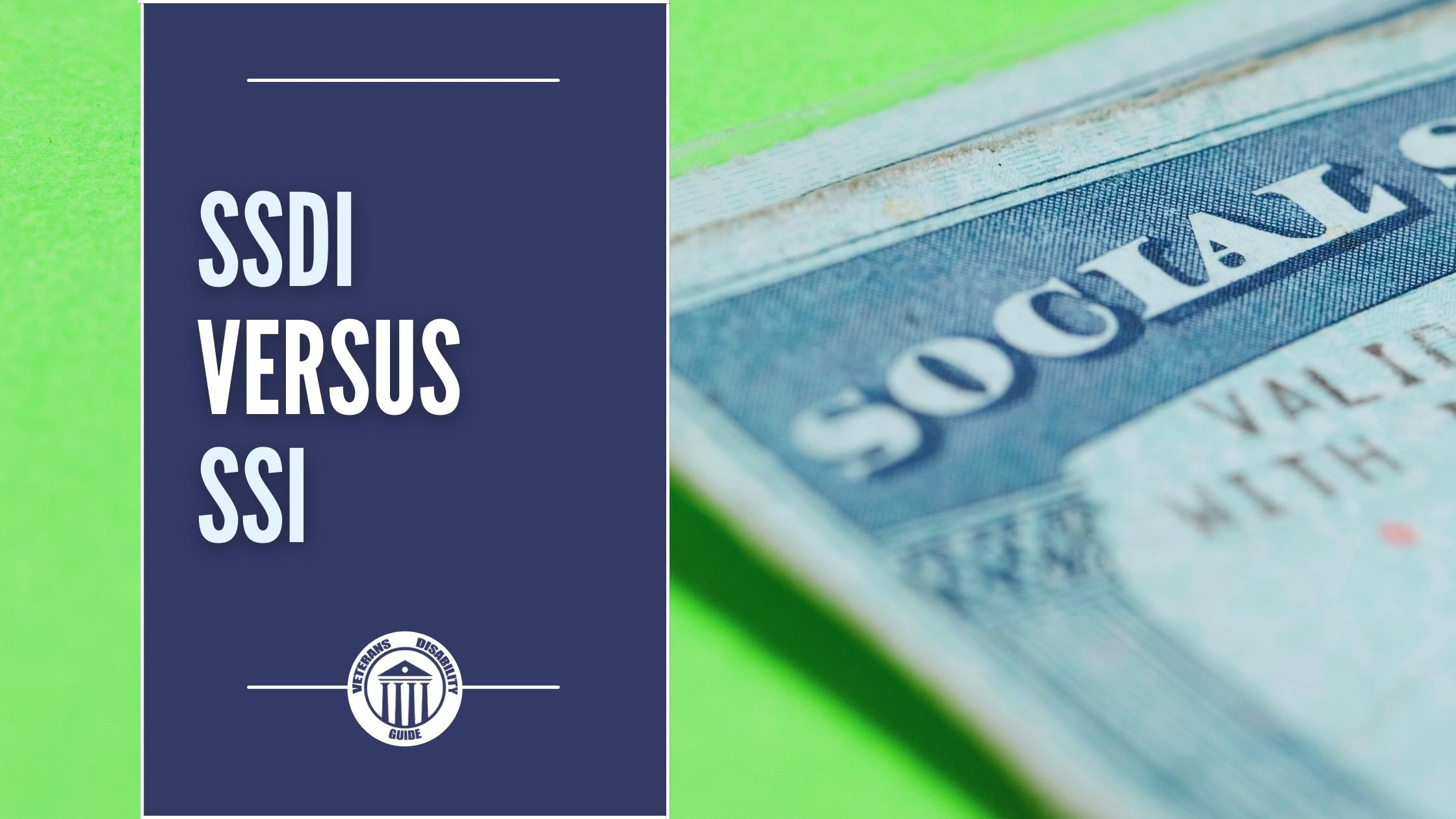
14 Dec SSDI vs SSI
What are the differences between the two Social Security programs, and which one is best for you?
Social Security Disability Insurance (SSDI) and Supplemental Security Income (SSI) are monetary benefits programs that the Social Security Administration (SSA) offers. The major distinction between the programs, is one requires work credits and the other does not. However, both programs serve many different purposes for civilians, and both have certain requirements that you must meet to receive benefits.
What is SSDI?
SSDI is a benefits program for disabled workers. Individuals who apply for SSDI must prove that they have a medical disability that prevents them from working for at least 12 months. They must also have the required amount of work history.
What is SSI?
SSI is a needs based benefits program. Individuals who apply for SSI must prove that they have limited income and resources.
Are There Similarities?
A similarity between SSDI and SSI qualification is that the claimant must prove medical disability to receive benefits from either program. However, the rest of the qualifications vary.
Differences Between SSDI and SSDI
Qualifying for Benefits
A major difference between the two programs is who the intended beneficiaries are and how they qualify.
SSDI benefits are for the disabled, but to receive the benefits you must do more than prove disability. You must also have the required work history, and be earning less than $1,310 per month.
SSI benefits are needs based, these benefits are intended for lower-income individuals. To receive benefits you must be disabled, blind, or at least 65 years old with limited income. Qualification for SSI is also based on income and assets. To qualify for benefits you must be earning less than $816 a month and have less than $2,000 in assets. There is no required amount of work history to receive SSI.
How Does the SSA Determine Payments?
Both programs send beneficiaries monthly payments, but the amount you receive differs depending on which program you use.
SSDI does not only use their work history requirement to determine if you can receive benefits, they also use it to determine how much you receive. SSDI benefits are based on prior earnings made while working. The reason for this is that SSDI is funded by payroll tax, so the amount you receive monthly is determined by how much you contributed while working. Because of this, the amount received by SSDI beneficiaries varies from person to person.
SSI is not funded by payroll tax, it is funded by state and federal governments. SSI payments are need based and not determined based on prior earnings. The amount you receive is based on both federal and state laws. For 2022, each SSI beneficiary receives a base pay of $841 . Some forms of income, dependants, or spouses may also offset the base amount.
Residency of Recipient
Both programs are through the SSA, meaning that they are both federal programs. However, some benefits can vary depending on which program they are from, and what state the recipient lives in.
Since the SSDI benefits you receive are based on prior earnings, they will not change regardless of where you live in the US.
SSI has a base pay that is equal for all recipients, but some states offer supplements. By living in a state that offers state supplements, beneficiaries may receive more in their monthly SSI payment. However, state supplement and SSI payments are based on earnings, living situations, and other factors, so a higher payment is not a guarantee.
Medical Benefits
SSDI recipients are typically able to receive Medicare after receiving benefits for two years. Dependants of the recipient (children under 18 or spouses) may also be eligible for Medicare benefits.
In most states, SSI recipients receive Medicaid immediately after the SSA approves their application.
Start Date for Payments
Once the SSA approves you for SSDI benefits, there is a five month waiting period before you begin to receive monthly payments. Beneficiaries may be eligible to receive past-due benefits (or back pay) for up to a year prior to their application.
For SSI, there is no five month waiting period. Benefits will start the first of the month following the month that the SSA approves your application for the program.
Approval Ratings
While it is difficult to receive either SSDI or SSI, studies show that claimants who apply for SSDI are more likely to get approved for benefits. The SSDI approval rating is around 50%, and SSI is around 35%.
The reason SSDI has higher approval ratings is most likely because SSDI applicants tend to have access to more money. Having a more steady flow of income allows for SSDI applicants to visit the doctor more, increasing their chances for being deemed medically disabled.
SSDI applicants are also more likely to have the ability to hire legal representation, rather than representing themselves. A study by the United States Government Accountability Office found that claimants who have legal representation are 3 times more likely to win benefits than those who do not.
Can I Receive Both SSDI and SSI?
It is possible to get both SSDI and SSI, or “concurrent benefits“. In order to do this, you must follow the guidelines for each program.
For example, if you are currently receiving SSDI payments but they are lower than $861, you could be eligible for SSI. But, you cannot have more than $2,000 in assets or else you will not be approved for benefits.


